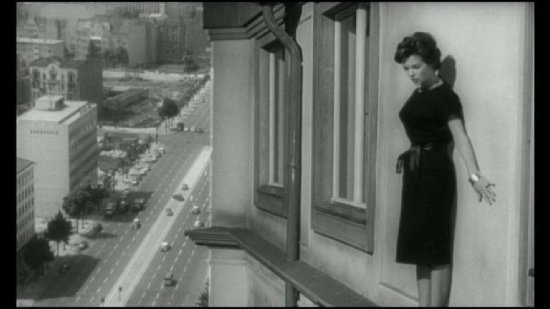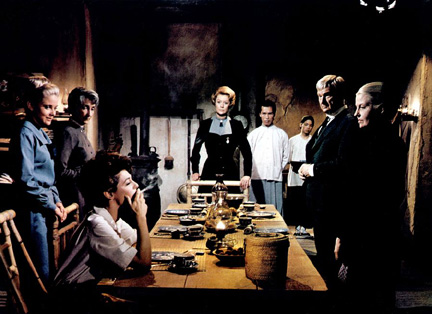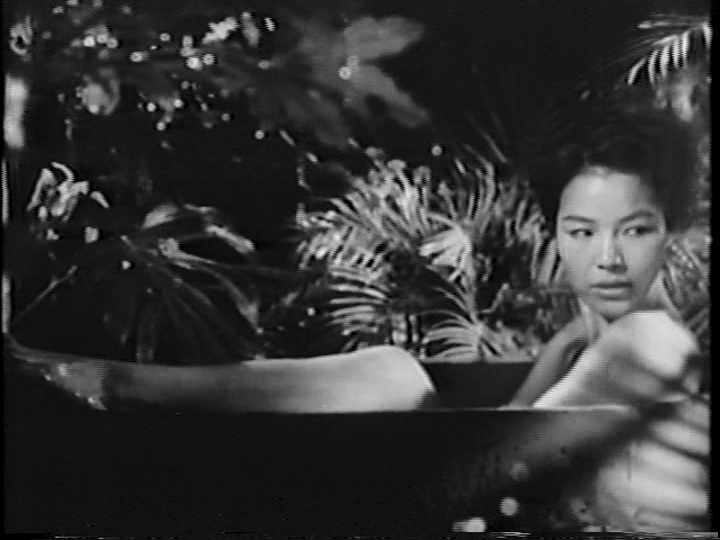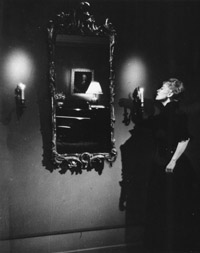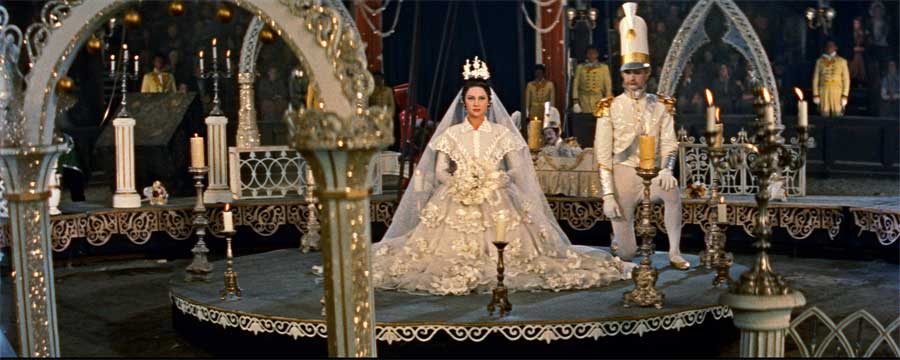From the May 13, 1988 Chicago Reader. — J.R.
The notion of the “testament” — the final work of a major filmmaker — is an important one to film lovers. It can be traced back to the 60s, specifically to the French New Wave and the forging in this country of the concept of the film auteur, a time when these and related phenomena were altering the official canons of movie culture. Starting next Tuesday, May 17, the Film Center of the Art Institute will present a weekly series of testaments to run through the end of June.
A lot of the movies included in “Testaments: Final Films of the Great Directors” were getting their first releases back in those days. And almost invariably, they were dying at the box office and at the hands of most mainstream reviewers, while a team of passionate and informed enthusiasts were singing their praises. Bloody religious wars were waged over these movies; in most cases, they’re still being waged.
Fritz Lang’s The Thousand Eyes of Dr. Mabuse (1960), for example, and John Ford’s Seven Women (1966) are movies that separate the sheep from the goats as far as aficionados of their directors are concerned. Both films premiered mostly in seedy grind houses; most reviewers promptly dismissed or ignored them. Dr. Mabuse, made in West Germany, was released in the United States only in a dubbed version; and because it has never been subsequently subtitled in English, the Film Center will be showing the dubbed version.
With the possible exceptions of Yasujiro Ozu’s An Autumn Afternoon (1962) and Andrei Tarkovsky’s The Sacrifice (1986), all the other selections in this series are as controversial today as they were when they first appeared: D.W. Griffith’s mawkish yet deeply moving The Struggle (1931), Josef von Sternberg’s rigorous avant-garde parable The Saga of Anatahan (1952), Edgar G. Ulmer’s The Cavern (1966), Jerome Hill’s independent Film Portrait (1972), Otto Preminger’s keenly felt The Human Factor (1979), and Sam Peckinpah’s The Osterman Weekend (1983).
Richard Pena, the director of the Film Center and the one who selected these films, believes they represent the essence of these filmmakers’ visions. My own particular favorites in the series — Carl Dreyer’s Gertrud (1964), The Saga of Anatahan, and Max Ophuls’s Lola Montes (1955) — are, for me, three of the most powerful and beautiful films ever made; many of the others are not far behind, and all are eminently worth seeing.
But what is or is not a directorial testament remains a very subjective matter. Pena has said that “it seems difficult to see” the last films of Howard Hawks, Alfred Hitchcock, Rainer Werner Fassbinder, and Jean Renoir as testaments (i.e., summarizing final statements) in the sense that Gertrud and Lola Montes are. Hawks’s Rio Lobo (1970) does seem to me a sour and weak spin-off of his two preceding westerns. But it can be argued that Hitchcock’s Family Plot (1976) is very much a testament in its attitudes toward death, deception, the romantic couple, and the double plot. Fassbinder’s Querelle (1982) has a formal boldness and sexual candor that make it arguably superior to many of his melodramas, and it’s no less reflective of his obsessions. And The Little Theatre of Jean Renoir (1970) can be defended as a summation of Renoir’s stylistic and thematic concerns — especially if one views it as an integrated feature and not as a collection of unrelated sketches.
But this is only to say that each critic, curator, and spectator is entitled to his or her own choice of testaments. Dreyer, as it happens, wound up making Gertrud as his testament only because he was unable to raise the money to make the films he wanted to: Medea or the life of Jesus, projects that he had nurtured over a much longer period. Besides, Dreyer put his whole heart and soul into everything he did.
This potent series might also be regarded as the testament of Pena, who leaves the Film Center and Chicago this spring to become chairman of the New York Film Festival’s selection committee and program director for the Film Society of Lincoln Center, which will open a permanent year-round theater of its own in 1990. For the better part of the 80s, audiences have been treated to the range, intelligence, daring, creativity, and consistency of Pena’s programming. He will be sorely missed — the Art Institute is currently in the process of choosing his successor — and while Pena himself may resist the notion that his “Testaments” series is a farewell gesture to Chicago, this shouldn’t necessarily prevent his audience from regarding it that way. The singularity and sharpness of his 13 selections for this series represent a personal, auteurist approach to film programming (spearheaded by the late Henri Langlois of the Cinematheque Francaise) that is practiced by very few film venues in this country. It is an approach to programming that is at once critical, educational, passionate, partisan, and trailblazing, dedicated less to a notion of what our film culture is than a vision of what it could be.
Dr. Mabuse and Jean Cocteau’s The Testament of Orpheus (1959) will be the first two shown, Tuesday, May 17, starting at 6 PM at the Film Center, Jackson and Columbus Drive. The following Tuesday, May 24, will feature Lola Montes and The Human Factor. For the rest of the schedule or other information, call 443-3733.


